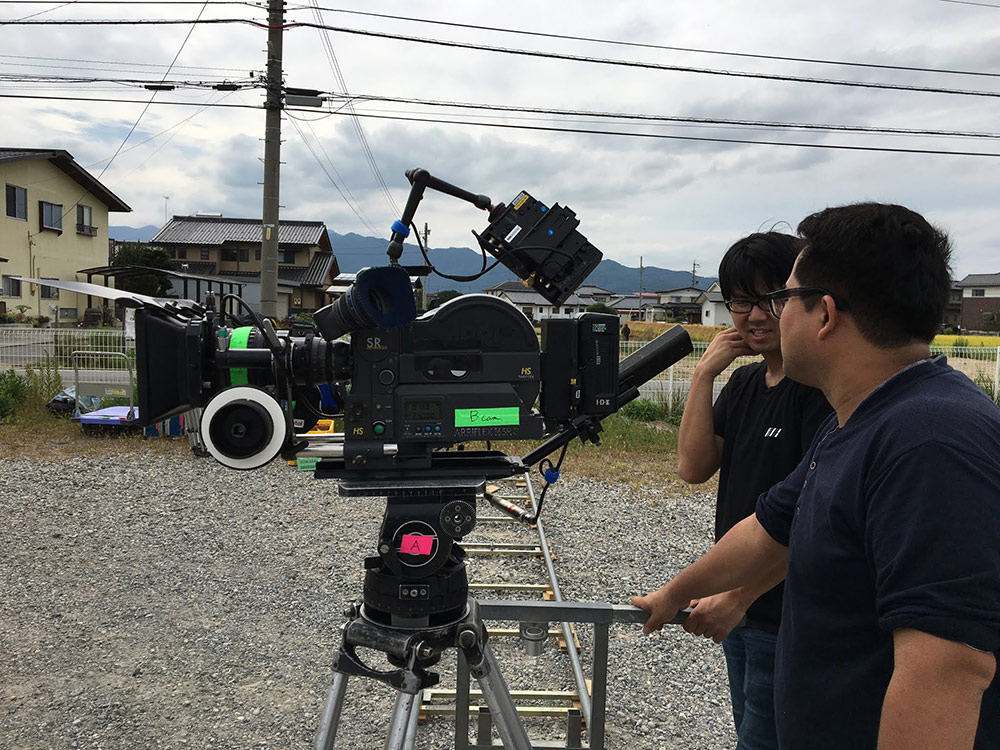![The new possibilities of visual expression hidden in 16mm film The challenge of the movie “Toki” [CINEMORE ACADEMY Vol.17]](https://cinemore.jp/images/d443e6ab51150f3acb05e8a3988ff6f62bc9c3014ab0eb89e7e447f90fe07f81.jpg)
(c)Movie "TOKI-" Executive Committee
The new possibilities of visual expression hidden in 16mm film The challenge of the movie “Toki” [CINEMORE ACADEMY Vol.17]
The movie "Toki" is directed by the up-and-coming director Marina Tsukada. This movie will be seen in 2030, 10 years from now. This is a huge project that will take 10 years to make. What's more, the film was shot on 16mm film, and the method used is very particular.
Nowadays, when digital cameras are at their peak, there are very few movies shot on film in Japan. The reasons for this are various, but the main one is cost reduction. Unlike digital, which allows you to record as much as you want on your hard disk, with film you first have to purchase the film itself, and the more you shoot, the more the film costs. In addition, you will also need a budget to develop the film. Also, compared to digital cameras, which can take bright and clear pictures even in dark places, film does not have such high sensitivity, so it inevitably requires more lighting equipment.
If the demand for film continues to decline, it would not be surprising if film distribution and processing would disappear from within Japan. Why did you choose to shoot on 16mm film for a shoot that would take 10 years? What is the appeal of shooting with film, even though it took some risks?
At this CINEMORE ACADEMY, the main staff of the movie "Toki", people in charge of post-production who are in charge of developing the film, and people in charge of manufacturers who manufacture and sell the film will gather together to talk about the movie "Toki" and the film. We spoke to him about the shoot.
Participants (titles omitted)
■Movie “Toki” staff:
Director: Marina Tsukada
Director of Photography: Shun Haga
Producer: Taro Imai
■Film developing laboratory:
IMAGICA Entertainment Media Services Co., Ltd.: Daisuke Inoue
■Film production and sales:
Kodak Japan: Yasutaka Yamamoto
Index
- “Tone” that can be unified even after 10 years of shooting
- Just because it's digital doesn't mean it's cheap
- The good tension that film shooting brings
- Film shooting not suitable for subjective images
- 16mm film photography is increasing
- Advantages of digital photography
- The future of film photography brought about by “Time”
“Tone” that can be unified even after 10 years of shooting
Q: Why was the movie ``Toki'' shot on 16mm film?
Tsukada (Director): For ``Toki,'' we are actually planning to film the 10 years it takes for the children to become adults, over a period of 10 years. Rather than having a child and an adult play the same role, we try to keep it authentic and have the same person play the same role.
In the same way, when I thought about what photography methods were best for capturing the real thing, I realized that unlike digital, which records using electrical signals, film, which is a living thing, catches the light of living things and leaves an image in its state. I thought the concept matched the idea of authenticity.
I also believe that digital technology will continue to evolve in the future, but there is also the reassurance that film will continue to be in the same format 10 years from now.

(c)Movie "TOKI-" Executive Committee
Haga (Director of Photography): Images shot with modern digital cameras have become so beautiful that they are indistinguishable from those shot with 35mm film, and I think that even when the audience watches the movie, , I don't think I know where it was taken. I had the impression that it was so beautiful. On the other hand, 16mm film is very grainy and lacks a digital feel, making it a medium that allows you to feel the film the moment you look at it.
When I read the script for Toki, I had a strong sense that the director, Mr. Tsukada, was touching on memories of things I had seen and felt up until now. 16mm film is a raw material that is photographed through a chemical reaction, and I think it gives the impression that it is extracting people's memories themselves, so when I read the script, I decided to shoot with film. I thought it was good.
In terms of technology, there was also concern that digital technology would evolve too much over the next 10 years. Director Michael Winterbottom's film ``Everyday'' (12) was shot digitally over five years, but the atmosphere on screen is completely different between the first half and the second half. . Due to the rapid evolution of digital technology, even my style has changed.
``From the time I was 6 years old until I became an adult. ” Preview
On the other hand, director Richard Linklater's `` How I Became an Adult'' was directed by Richard Linklater. (14), we shot on 35mm film for 10 years. According to the director, during those 10 years, as the industry's demand for film decreased and photo labs disappeared, it was extremely difficult to continue shooting film, but he was able to shoot everything with the same tone using 35mm film. He said it was very good.
For this reason, I thought that shooting on 16mm film would allow me to keep the tone of the movie consistent from beginning to end.

